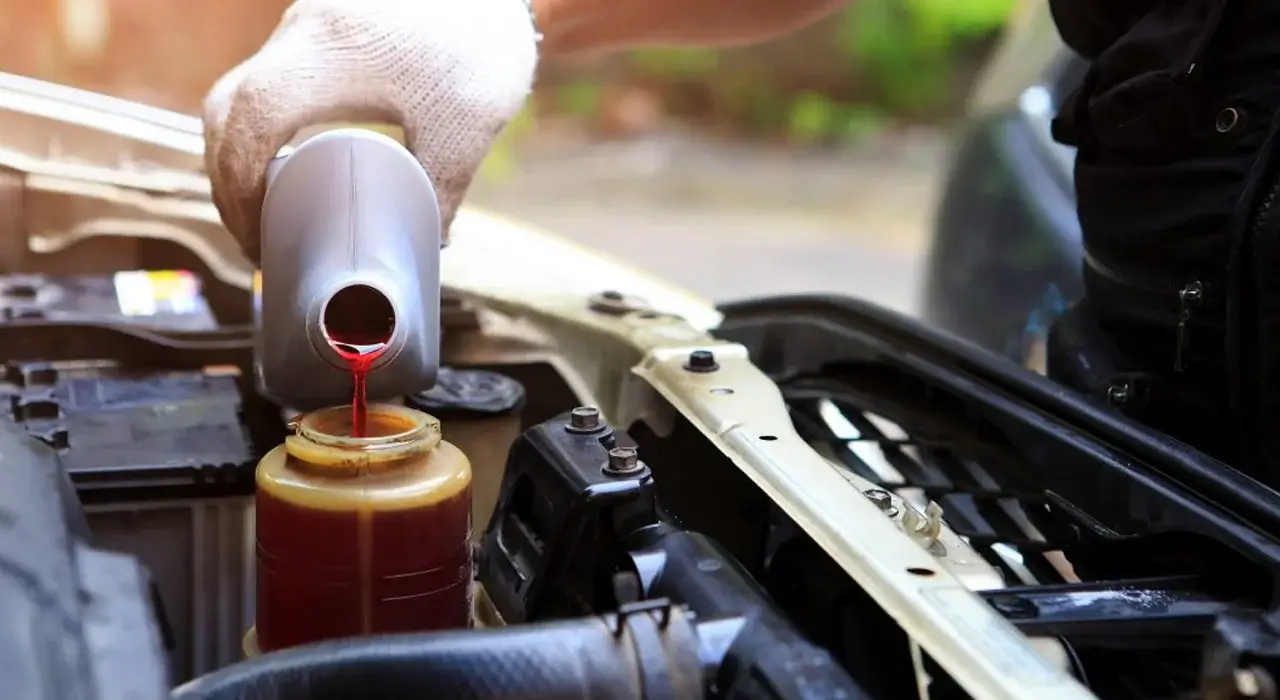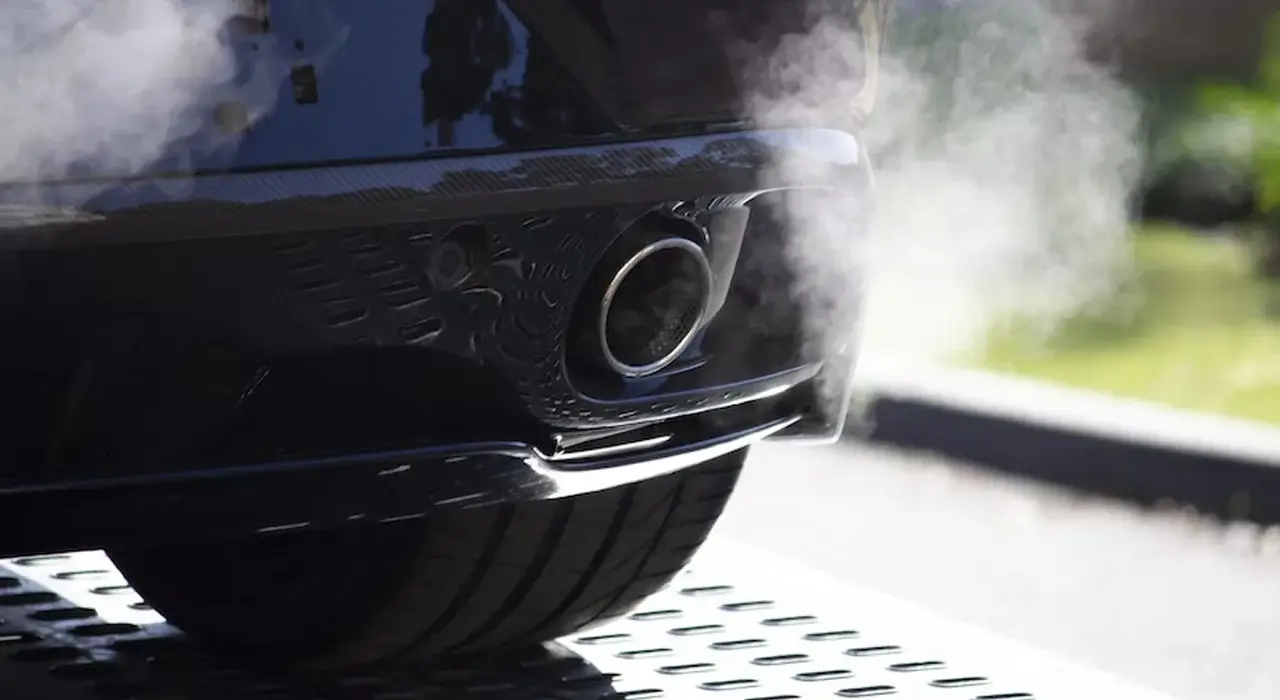Power steering fluid is the most ignorant part of your car. After all, many motorists do not know how often the power steering oil needs to be changed and how strong the steering wheel is for you.
Power steering fluid is a hydraulic fluid used in all gasoline-powered cars and light trucks. It helps direct engine power to the wheels, making it easier for the driver to maneuver the vehicle.
Over time, the PSF can become contaminated with dirt, oil, and other debris. When this happens it can reduce steering performance and even fail the power steering system.
To ensure the long-lasting performance of your vehicle’s power steering system, It is recommended that you change your power steering fluid frequently.
But changing this fluid used to be very time-consuming and difficult but in this article, we will show you how to flush the power steering fluid and how often the power steering fluid should be changed.
How To Check Power Steering Fluid Level?
It is important to keep the power steering fluid level at the correct level for your vehicle. Fluid levels that are too low can cause steering problems, while fluid levels that are too high can damage the system.
Suggestion: Beginner’s Guide If Power Steering Pump Is Bad Or Rack And Pinion?
To check the power steering fluid level, you need to pour a small amount of liquid into a glass, and then measure the level with a hydrometer. You should replace the power steering fluid when the level falls below 2/3 or rises above 4/5 of the original volume.
It’s important to keep your fluid levels to the maximum. Power steering fluid is a viscous fluid that contributes to a smooth and stable ride.
Over time, the fluid can become contaminated with dirt, dust, and other debris. This can make the power steering difficult to use and unreliable.
4 Ways To Know When to Replace Power Steering Fluid
Not all mechanics or owners’ manuals will agree on the exact power steering fluid change interval. Because it’s largely out of sight and out of mind, many drivers don’t change new fluid until a problem arises.
To make matters worse, different liquids can also have different shelf lives. With all of this in mind, it’s hard to know when it’s time to change your power steering fluid. Here are the top 4 ways to say it.
1. Visual Inspection
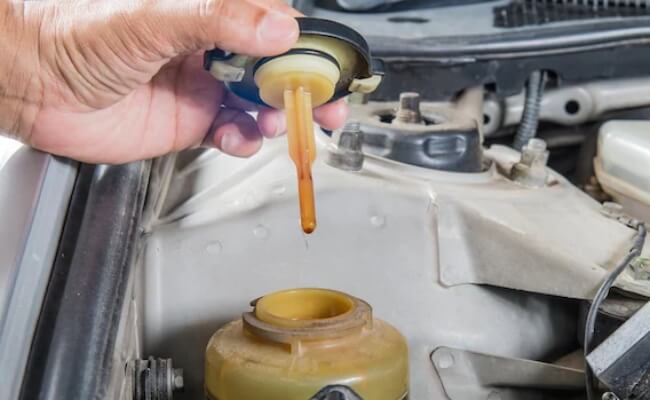
The best way to determine if the power steering fluid needs changing is to visually inspect the color of the fluid. New power steering fluid is usually orange, red, or pink and somewhat clear, while contaminated power steering fluid is black, brown, or impossible to see through.
The color of a vehicle’s power steering fluid can be checked on an under-hood dipstick.
2. Read The User Manual
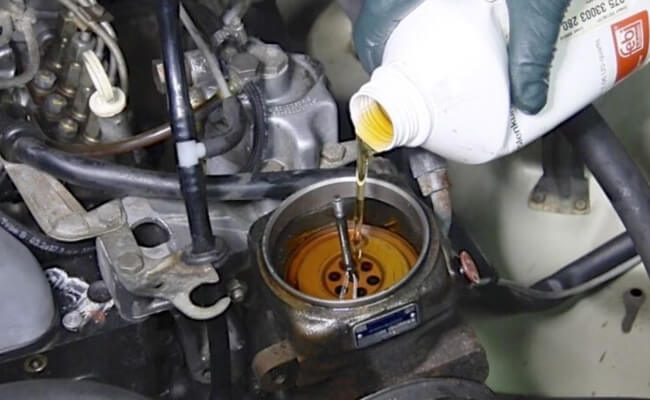
This may seem like obvious advice, but your vehicle’s owner’s manual likely has a recommendation on when to change your power steering fluid. However, the interval often differs from vehicle to vehicle.
Popular For You: 7 Most Comfortable Car Seats For Long Trips – Full Review To Buy Online
Your vehicle may also require a unique fluid formulation to achieve proper performance. It’s a mistake to assume that one vehicle’s drain interval or fluid type will work for another, even if it’s the same brand, so break those thorns and read on.
3. Dark Fluid
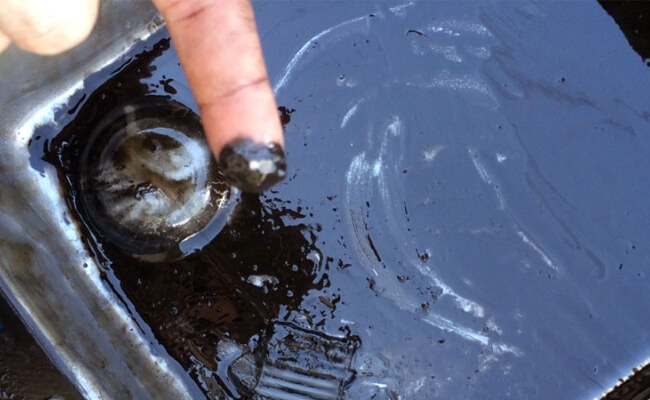
After running your vehicle for a few minutes, open the hood and remove the oil dipstick. Most of the time, your power steering fluid should be red and clean.
If the fluid looks dark, dirty, or smells burnt, it usually means there is a problem. In the worst case, the system may need to be flushed and replaced with fresh power steering fluid.
Also Check:
4. Hard To Turn Steering Wheel

If the steering wheel is stiff and difficult to turn, power steering fluid may be the problem. A flywheel that does not turn smoothly may indicate low or contaminated fluid.
We recommend that you take your vehicle to Premier Automotive Service for a vehicle inspection to determine the cause of the problem.
Why Is Replacing Power Steering Fluid Important For You?
Power steering fluid is a mineral-based fluid that helps lubricate and cool the power steering system. This system assists the driver in maneuvering his vehicle by directing the engine’s hydraulic power directly to the wheels.
Over time, power steering fluid can become contaminated with lubricating oil, ash, metal deposits, and other contaminants. When present in high concentrations, these contaminants can cause power steering failure and reduced precision.
Don’t Miss To Checkout: What Happens When Timing Belt Breaks While Driving?
Therefore, it is important to change the power steering fluid once a year or whenever you notice significant changes in performance or noise. In this way, you will help to keep your car in top condition and prevent major problems.
How To Flush Power Steering Fluid?
For different cars, power steering fluid usage is different. Some even use automatic transmission fluid for power steering. Be sure to use the correct fluid specified for your specific vehicle. Draining and replacing power steering fluid is time-consuming.
Therefore, you should consider reasonable maintenance time so as not to affect daily operations. To flush out the power steering fluid, you need to follow these steps:
A. Open the Hood
Start with the engine off and the vehicle on level ground. Wear protective gloves, clothing, and goggles to protect against accidental spills.
Some vehicles have a drip catcher on the underside that you may need to remove to gain access to the steering system. If there is liquid in the drip trap, there is a leak somewhere that needs to be identified.
B. Find Fluid Reservoir
Find your power steering fluid reservoir. Most of the time it is situated with the power steering pump itself. Open the lid and use a turkey baster to suck out as much liquid as possible, like a giant eyedropper. Locate the power steering fluid return line.
Also Check:
There are two lines under the car that connect to the power steering pump. The return line is the one with clamps that you can remove with pliers.
C. Check Fluid Level and Clean Tanks
This is an important step that you must do correctly because it will affect the quality of the new fluid after the replacement. You need to check the condition of the power steering fluid. If the liquid is dark or dirty, wipe up a small amount of liquid on a paper towel.
Then look at the layer of liquid on the towel to determine its quality. You can use water to clean the liquid tank. Since water and oil do not dissolve, you can use this method.
D. Flush Fresh Fluid
You then start your car’s engine and let the power steering pump draw the fluid from the reservoir. At the same time, the pump pushes the old liquid out of the low-pressure line.
Therefore, when starting the car, you should pay attention to the drain pan while keeping the tank full. Finally, after the new fluid in the low-pressure line almost overflows, turn off the engine and reconnect the cable.
E. Check for Leaks
Start the engine and let it run while you check under the car for any leaks. The leak may be where you disconnected the hose to flush the system.
But don’t mistake any liquid spilled while the hose was off for a new leak either.
Top FAQs About Replace Power Steering Fluid
What is a power steering fluid?
Power steering is usually a hydraulic system, much like brakes, that makes it easier for you to steer the car. This system contains a fluid that needs to be changed from time to time.
You should also check any leaks in the worn hose and fix them as soon as possible. More and more new cars use electric power steering. This uses an electric motor instead of a hydraulic system and requires no fluid changes.
How long should the power steering fluid last?
There is no real lifespan for these pumps and theoretically, with proper maintenance, yours could last a car’s lifetime. However, they typically don’t last more than 100,000 miles, and pump failures at fewer miles are not uncommon.
If left unopened, this liquid decomposes in 3 to 5 years. Over time, the ingredients in the liquid can break down and reduce the effectiveness of that liquid.
What happens if I don’t change the power steering fluid?
If you don’t change the power steering, there is a chance your car has major problems. In particular, the brakes and steering do not work properly. It will be difficult for you to control your vehicle and it will endanger both people and cars.
If you detect a leak in the power steering, it is a problem. If you act quickly, there may be an inexpensive solution.
Is power steering fluid flush necessary?
The short answer is yes, routine power steering flushes are essential to protecting your vehicle and keeping it safe on the road.
Your recommended flushing routine will largely depend on your vehicle type, as steering systems and fluid requirements may vary. Consult your user manual for specific manufacturer recommendations.
Can you replace the power steering fluid yourself?
Changing your power steering fluid yourself is inexpensive and easy and provides additional insurance against other problems that may arise. It also gives you the ability to check for leaks and swap out other components that need it.
If you’re not comfortable doing this job yourself, taking it to a shop won’t break the bank either.
How much should a power steering flush cost?
As with a coolant flush, the cost of a power steering flush depends on the make and model of your car and whether you are taking the vehicle to a shop or performing the flush yourself. A typical power steering flush, including labor, costs between $90 and $125.
Final Thought
When it comes to how often to change your power steering fluid, there are a few things to keep in mind. First, check your system every time you fill up your car and make sure everything is working properly.
Second, it’s better to change the PSF right away if there appears to be debris or dirt in the system rather than waiting 3,000 miles later when it could lead to major problems like power steering system failure.















